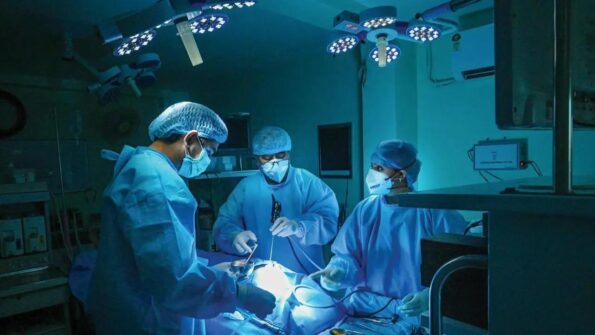Thane: Man with troubling urinary symptoms finds relief after treatment

In a major medical milestone, a 30-year-old man struggling with bladder neck obstruction has found relief through a minimally invasive procedure performed at hospital in Thane.
The patient had been experiencing troubling urinary symptoms, but was successfully treated by Dr. Aakil Khan, urologist at KIMS Hospitals using the iTind device, believed to be a next-generation solution that opens the blocked passage without the need for major surgery, a catheter, or an overnight hospital stay.
The iTind procedure, done under sedation, offers a key advantage over traditional treatments: it preserves sexual function, causes minimal discomfort, and allows same-day discharge.
During the procedure, a slender, three-strut nitinol device is inserted through the urethra into the prostatic urethra and bladder neck. Under direct vision with a cystoscope, the device is carefully positioned in the precise area of obstruction. Once deployed, it expands gently, applying controlled radial pressure to the surrounding prostatic and bladder neck tissue. Over the course of 5–7 days, this pressure gradually reshapes and remodels the obstructing tissue without cutting, heating, or ablating it.
This reshaping creates longitudinal channels within the prostate and bladder neck, improving urine flow while preserving ejaculation making it an ideal solution for younger individuals. After the tissue has remodeled, the device is retrieved in a brief follow-up visit using a retrieval catheter or cystoscopic grasper. The removal is typically performed under light sedation or local anesthesia and takes only a few minutes. The patient is able to void spontaneously after device removal, usually with immediate symptom improvement.
The 30-year-old male from Mumbra had a structurally high bladder neck a condition more commonly seen in older individuals due to prostate enlargement, but also found in 5–10 per cent of younger patients. In younger individuals, this congenital anatomical variant can lead to bladder neck obstruction, causing difficulty in urination.
Initially, the patient was treated with alpha-blockers, which failed to provide relief. A surgical incision of the bladder neck (done endoscopically) was considered but avoided due to the risk of retrograde ejaculation, a common side effect of traditional procedures like TURP (transurethral resection of the prostate). The iTind implant offered a safe, non-invasive alternative that resolved the obstruction while preserving sexual function.
After the reshaping is complete, the device is removed in a short follow-up visit, leaving behind a more open urinary passage. This minimally invasive approach eliminates the need for incisions or prolonged catheter use, significantly reducing the risk of bleeding, infection, or erectile dysfunction often associated with conventional surgeries.
“This is the first iTind procedure conducted in Mumbai and only the second or third in Maharashtra,” said Dr Khan. “Across India, only around 30 cases have been done so far, mainly in Delhi and Pune. The technique is a breakthrough, especially for younger patients who seek relief without compromising quality of life,” he added.
The patient, who was discharged the same day, was symptom-free and grateful. “I was nervous about surgery, especially with risks to daily life and personal health. but this treatment felt effortless. I was back on my feet the same day with no pain and no complications,” he shared.
iTind is part of a group of emerging Minimally Invasive Surgical Therapies (MIST), alongside options like UroLift, aimed at managing urinary obstruction with minimal disruption to lifestyle.
Search
Recent
- 126 packages, six countries: Israel airdrops aid in Gaza
- ‘Her lips move like … ‘: Trump praises Karoline Leavitt – Watch video
- Hyderabad accountant wakes up naked next to stranger, framed for murder
- Rape case: Revanna breaks down in court again; pleads for minimum punishment
- ‘Welfare of farmers, youth top priority’: PM Modi’s addresses ‘global instability’





